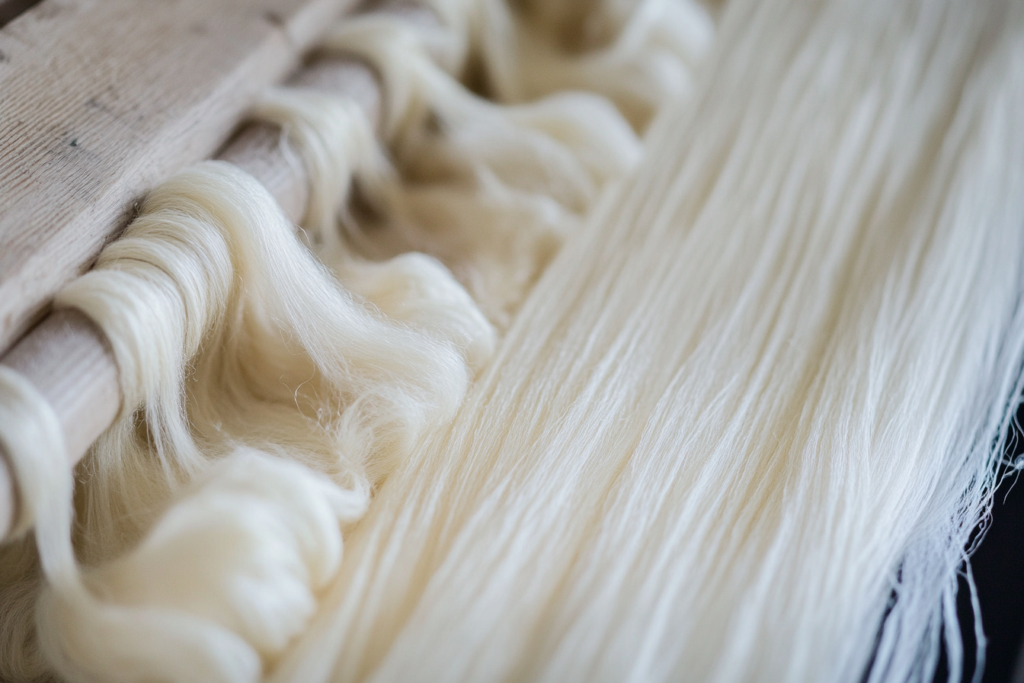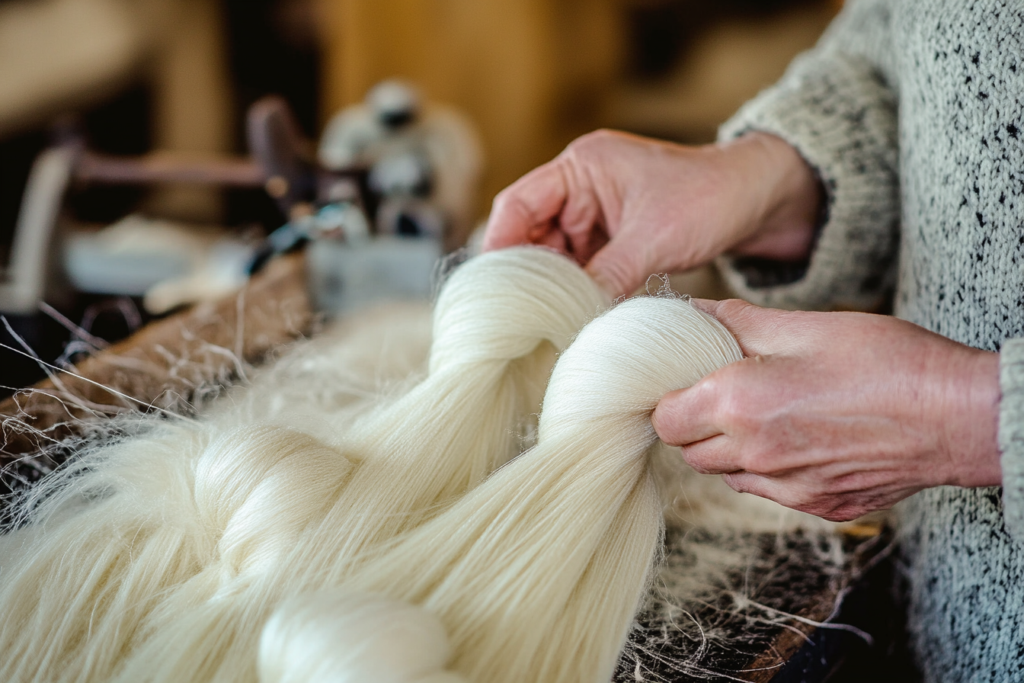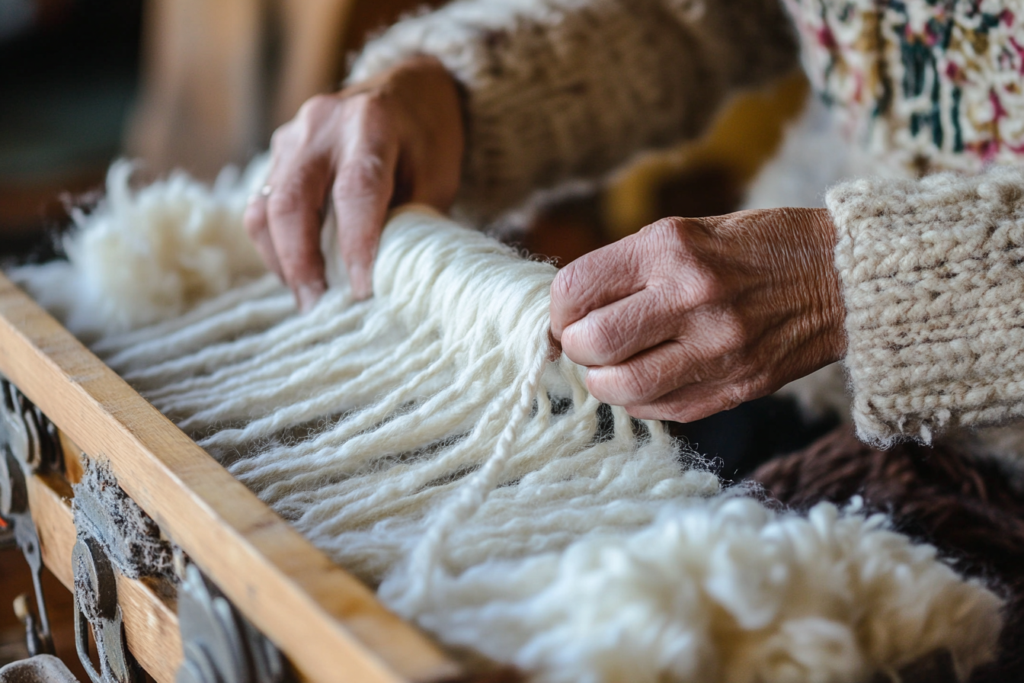Introduction: What is Combing?
Combing is an essential process in textile manufacturing that refines raw fibers to produce higher-quality yarn. The process involves removing shorter fibers from the fiber mass, leaving behind the longer, stronger, and more uniform fibers. This results in a smoother, finer, and more consistent yarn, which is ideal for creating high-end fabrics.
In this article, we will dive into the combing process, its benefits, and how it contributes to the overall quality of the final textile product.


The Combing Process Explained
The combing process is typically performed after carding, which is the initial step of fiber preparation. During carding, fibers are separated and aligned, but the shorter fibers still remain mixed in with the longer fibers. Combing removes these shorter fibers, leaving only the longer, smoother strands behind.
Here’s a step-by-step breakdown of how combing works:
- Preparation: After the fibers are carded, they are fed through a series of combs or rotating combing machines.
- Separation: The combs separate the fibers by length. The longer fibers pass through, while the shorter fibers are discarded.
- Drawing: The remaining longer fibers are drawn out into a fine, uniform strand.
- Finishing: The combed fibers are then twisted together to form yarn, which is stronger, smoother, and more even than yarn made from uncombed fibers.
Benefits of Combing
- Smoother Yarn:
- One of the main benefits of combing is the creation of smoother yarn. The removal of shorter fibers ensures that the final yarn has fewer inconsistencies, making it much softer to the touch.
- Finer Yarn:
- Combing allows for finer yarn production by removing irregularities in fiber length. This results in a yarn that is thinner and more refined, ideal for high-quality fabrics.
- Stronger Yarn:
- Longer fibers are stronger than shorter fibers. By combing out the shorter fibers, the resulting yarn is stronger and more durable, which makes it perfect for fabrics that need to withstand wear and tear.
- More Uniform Yarn:
- Because combing eliminates shorter fibers, the remaining fibers are more uniform in length. This uniformity creates more consistent yarn, which is essential for achieving high-quality fabric with a consistent appearance.
- Better Dyeing and Finishing:
- The smoother and more uniform nature of combed yarn leads to better dye uptake and more even coloring. This is especially important in high-end textiles where uniform color and finish are crucial.
The Role of Combing in Textile Quality
The combing process directly affects the overall quality of the fabric. Fabrics made from combed yarn tend to be softer, smoother, and more resilient than those made from carded yarn. This is why combed yarn is often preferred for high-end products such as fine shirts, luxury bedding, and premium knitwear.
For example:
- Combed Cotton: The use of combed cotton results in fabrics that are softer, stronger, and more durable than regular cotton.
- Combed Wool: Wool that has been combed produces a finer, softer fabric that is less itchy and more comfortable to wear.
In short, combing improves both the appearance and performance of the final textile product.
Combing vs. Carding: Key Differences
While combing and carding are both used to prepare fibers for yarn production, they serve different purposes and are performed at different stages in the process:
- Carding:
- Carding is the first stage of fiber preparation. It helps separate and align fibers but does not remove shorter fibers. The result is a fluffy, less refined product that still contains a mixture of short and long fibers.
- Combing:
- Combing is done after carding and removes the shorter fibers, leaving behind only the longer fibers. This results in a much smoother, finer, and more uniform yarn.
Essentially, carding prepares the fibers, while combing refines them for superior yarn quality.
Applications of Combed Yarns
Combed yarns are ideal for applications where smoothness, durability, and a fine finish are critical. Some common uses of combed yarns include:
- Luxury Fabrics: High-end clothing, especially shirts, blouses, and fine knitwear.
- Bedding: Combed cotton is often used in high-thread-count sheets and duvet covers for a soft, smooth finish.
- Knitted Garments: Combed yarns are frequently used in knitting, as they produce a finer, more elastic fabric.
- Premium Home Textiles: Items such as towels and blankets made from combed yarns are softer and more absorbent.
Conclusion: The Importance of Combing in Yarn Quality
Combing is a vital process in the textile industry that enhances the quality of yarns by removing shorter fibers and leaving behind the finer, stronger fibers. This leads to smoother, more durable, and more uniform yarns, which are essential for creating high-quality fabrics. From luxury clothing to home textiles, combed yarn plays a significant role in producing superior, refined products.
By understanding the importance of combing in textile production, manufacturers can ensure that their garments and fabrics stand out for their exceptional quality and smooth finish.



